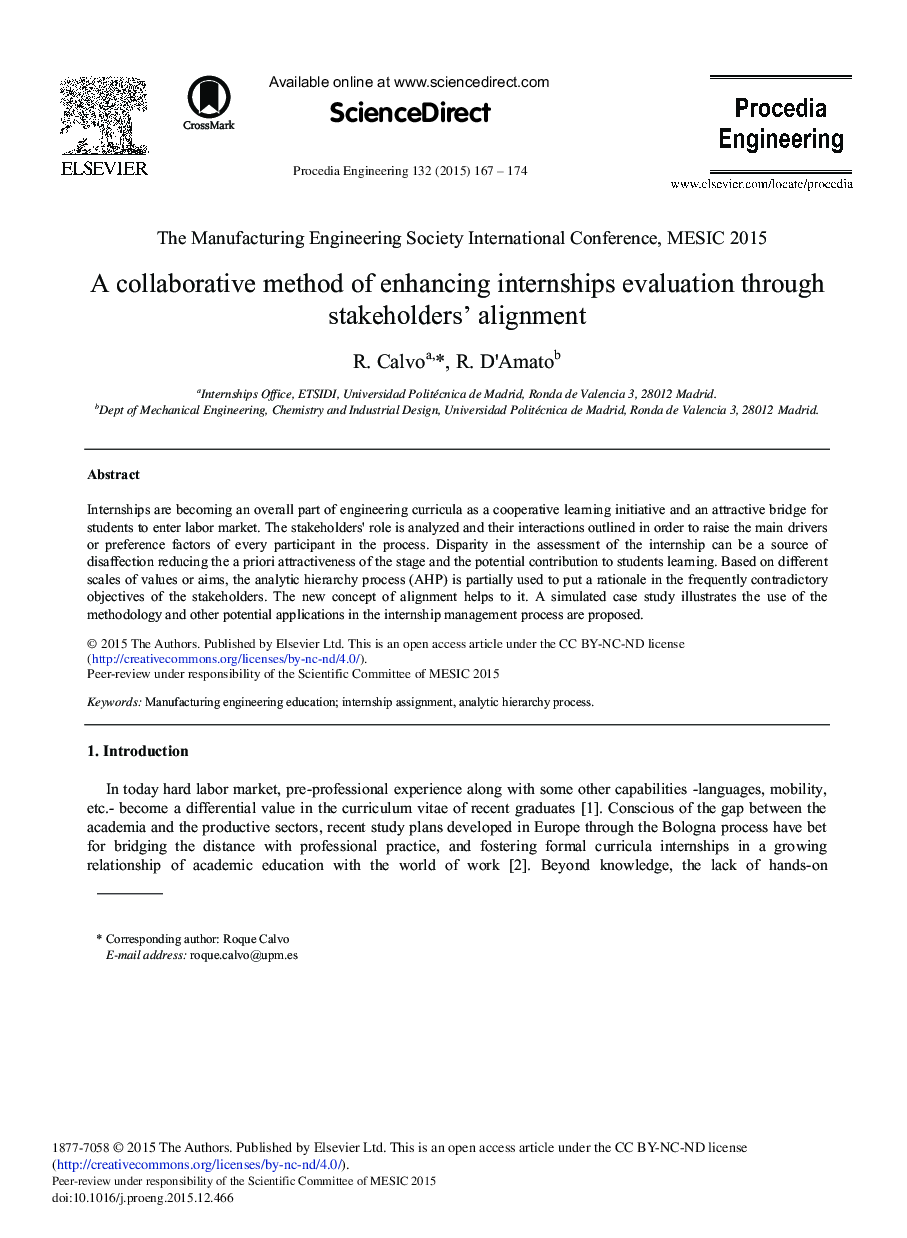| Article ID | Journal | Published Year | Pages | File Type |
|---|---|---|---|---|
| 854106 | Procedia Engineering | 2015 | 8 Pages |
Internships are becoming an overall part of engineering curricula as a cooperative learning initiative and an attractive bridge for students to enter labor market. The stakeholders’ role is analyzed and their interactions outlined in order to raise the main drivers or preference factors of every participant in the process. Disparity in the assessment of the internship can be a source of disaffection reducing the a priori attractiveness of the stage and the potential contribution to students learning. Based on different scales of values or aims, the analytic hierarchy process (AHP) is partially used to put a rationale in the frequently contradictory objectives of the stakeholders. The new concept of alignment helps to it. A simulated case study illustrates the use of the methodology and other potential applications in the internship management process are proposed.
